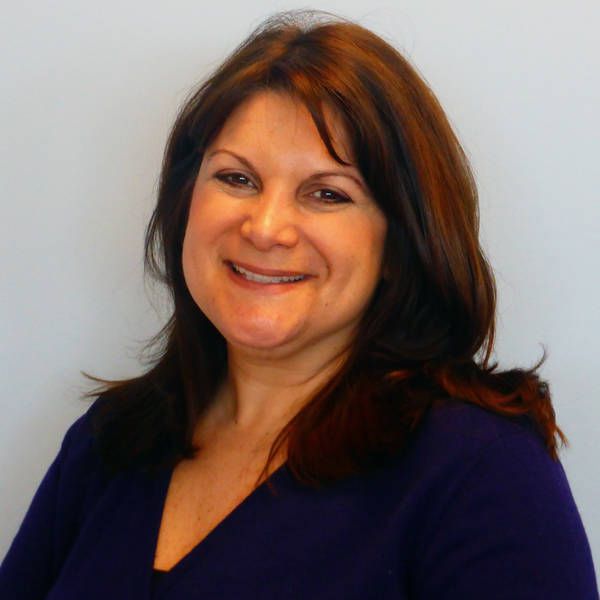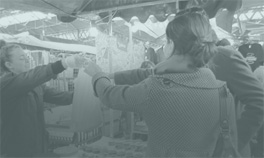SO WHAT? Keeping Our Eyes on the Prize
Written by Brandee McHale, Citi FoundationLet’s say that you are a philanthropist with a deep commitment to improving the lives of low-income people. You have a healthy budget and a talented staff, and after a strategic planning process worthy of the most rigorous management consultants, you make financial capability a cornerstone of your philanthropic approach. You identify the best thinkers in the field and learn from them. You identify the best practitioners and support their work.
Now let’s say that one of your grantees works with a low-income family who has heavy debt, poor credit, and no savings. Through intensive and well-designed interventions, this family improves its credit score, reduces its debt, and opens a savings account. That’s good news, and we shouldn’t dismiss these gains. But I want to ask a simple, but powerful question: So what?
Those metrics don’t tell us whether these outcomes are part of a new way of living for that family, or whether they are just a momentary blip in response to a time-bound intervention. They don’t tell us whether they have caused, or were caused by, a lasting sense of opportunity and empowerment. In short, these outcomes, positive as they may be, don’t automatically mean success as you defined it: improving the long-term well-being of low-income people. Philanthropy, after all, is dedicated to the progress of individuals, families and communities. Metrics are one way to measure success, but they do not define it.
When defining success in the area of financial capability, it’s logical to focus on money — it is easy to quantify and can serve as a measurable indicator. But for those of us who work in the field of financial capability and well-being, we must not lose sight of the purpose of our work. I am not suggesting that we toss aside all efforts to measure our work or quantify results. Rather, I am urging that in the process, we keep sight of the equally important question of so what? — the question that defines the ultimate purpose of our work and should guide our every action.
First, a bit of background. My institution, the Citi Foundation, has established a long-standing commitment to promoting financial success. When we first began making grants in this space, the Citi Foundation’s financial capability strategy stressed classroom-based financial education. Our working hypothesis was that if you taught people how to manage their money, they would be better able to navigate financial choices and challenges, which in turn would improve their financial standing. We felt so strongly about this that we made financial education a core focus area. We invested $68 million over six years to build our own curriculum, train volunteers, and fund community-based organizations to get people into classroom seats so we could educate as many as possible.
Then we noticed that something didn’t click.
Imparting information alone wasn’t really helping because the core issue in the first place was not solely a lack of information. This is not to say that information is not important; it is a basic building block. But the real trick is translating this knowledge into action and positive financial behaviors. As a general rule, people do not necessarily think their way into a new way of acting. Instead, they act their way into a new way of thinking.
In their white paper, “The Financial Health Check,” Antoinette Schoar of MIT and Piyush Tantia with Ideas42, reference a number of studies indicating that the impact of financial education is mixed. Although some studies find evidence that people do learn, others show that financial education has no effect on financial behavior. According to Schoar and Tantia, psychological barriers often prevent people from taking appropriate action. For example, despite good intentions, people may forget to act without a well-structured plan and prompts, and small hurdles or a lack of willpower may discourage them from following through.
What this meant for the Citi Foundation’s work, as we discovered, was that financial education was necessary, but by itself, was insufficient for the long-term economic well-being of individuals, families, and communities.
So we modified our tactics to ensure that people have access to more than just information. For example, rather than just being taught the importance of savings, we ensure people can actually open and start managing a savings account while developing savings goals. Over time, we realized, as they watched the balance grow, participants became even more inspired to divert income from consumption to savings until the habit became second nature. We call this approach financial capability.
An important part of this effort was recognizing that while households could set a financial goal, staying on track often served as a challenge. As a result, we chose to emphasize financial coaching as a part of our overall financial capability strategy. We were among the early promoters of this coaching approach, which had a powerful impact, giving people the motivation, the hope, and the tools to not only gain control over their short-term financial situation, but to also believe they could manage their money to achieve life goals.
“I learned that I am worth it,” as Joanna (pseudonym), a participant in a Citi Foundation-funded coaching program put it. At a graduation ceremony in November 2012, Joanna described for her fellow financial coaching graduates how she had previously survived on payday lenders, emergency loans from increasingly exasperated family members, maxed out credit cards, and overdrawn accounts:
I felt I owed myself that shopping spree because of the stress and the bills . . . At the root of it all, I was afraid to face my ugly financial situation . . . and I had a fear [going into the coaching program] about how I would be perceived. [My coach] made it all bearable; she was gracious the entire year. [I learned that] there are no easy answers, that I must make healthy financial decisions whether I have enough money or not, that paying myself first is actually a benefit to everyone in my family, and that I am worth it — and I am better off for it. I now have a significant amount of savings to put towards a down payment on a home.
When an individual is able to see and believe in a better future, working towards it feels empowering and dignifying, not futile. Dreams no longer seem distant or foreign. Instead those dreams become attainable goals that are within reach and recognizable. That is the essence of the so what? And that is what the Citi Foundation strives to achieve.
Since 2010, the Citi Foundation has invested $65 million in the United States to provide people with the tools and guidance to manage their income and expenses more effectively, build savings, reduce debt, build credit, and work toward achieving both short- and longer-term financial goals. In the process, we gathered a lot of data.
In 2014, we saw that more than 63 percent of the participants in our funded financial capability programs had fully achieved a stated savings, debt reduction, or credit score related outcome. We used this data to help bring other funders along with us and adopt a “beyond the classroom” focus.
I am proud that we served as an early adopter of results-focused grantmaking, with real data to guide our work. It was solid data, after all, that signaled more could be done in our efforts around financial education. It was data that allowed us to adjust our strategy to one that has turned out to be so important — for us and, most important of all, for those we aim to serve through our philanthropic investments.
In the classic formulation, we would summarize the lesson we learned as “outputs are not outcomes.” Bodies sitting in chairs, or credit hours of financial education delivered, are outputs. Savings accounts opened to prepare for the future or credit scores improved are outcomes. They are more important. But here’s the thing: “outcomes” are not ultimately the point either. People like Joanna are.
People’s lives are complex and changing. Accordingly, as philanthropists, we need to expand our time horizons and support people in their efforts to adapt, move through their financial lifecycle, and navigate major life events. There is a multi-billion dollar a year industry of financial advisors available to wealthier households. Philanthropy can play an important role leveling the playing field for households with the least ability to weather financial shocks in their lives. One way to do this is to shift our investment horizons from a short-term outlook — namely, how quickly an individual or household resolves a specific financial issue or meets a single one-time financial goal — to a long-term, systems-level view that considers how we inspire people to believe they can reach and reinvent their goals, and just as important, make sure they have the ability to seek out trusted advisors over this lifecycle.
The concept of two Americas is becoming increasingly prevalent, while newspaper headlines assure us that economic indicators are moving in the right direction. But more Americans feel more financially vulnerable than ever, and as asset and income inequality continues to grow, the schism in our society is no longer a risk but an increasing reality. Philanthropists have never been more focused on results, but I wonder whether we are letting our focus with data distract us from the big picture — ensuring that the paths to opportunity and upward mobility still exist.
Whether they focus on income inequality, educational attainment, health outcomes, social development, or the various points where these issues intersect, policymakers and thought leaders recognize the challenge we face. The seeds of change were sown decades ago as middle class wages stagnated and the cost of goods increased more than incomes. Research conducted by the Economic Policy Institute, which has documented hourly wages for nearly three decades, shows that since 1979, the vast majority of American workers has seen their hourly wages stagnate or decline. But you don’t need complex economic analysis to know that when expenses exceed income, especially over long periods of time, financial stability erodes.
There is a role for philanthropy in funding interventions that treat the consequences of erosion. When families’ margin for financial error shrinks to the vanishing point, the task becomes all the more urgent to build their financial capability. But if we make treating the symptoms the goal — in other words, if we lose sight of the so what — philanthropists risk becoming tacit supporters of the status quo.
I doubt any philanthropist would dream of saying, “Our task is to help you better manage your scarcity.” But that is exactly what you are saying, if you base grantmaking solely on program performance measures and outcomes. You are accepting that scarcity as a given, and defining “the problem” as the inability of some to manage within the confines presented before them.
Of course, it is futile to imagine that philanthropy alone can undo structural changes brought on by social and economic trends decades in the making. But every philanthropist who is seriously interested in having an impact should look beyond the data and make an effort to understand how to permanently contribute to opportunity and advancement. The role of implementing effective programming, whatever the particular tactical approach, is the job of trusted grantees. The job of staying focused on the so what? is, in a perfect world, everyone’s responsibility. But it is particularly the duty of philanthropists.
We all care about improving the financial well-being of American families. If we want to help people lead healthier lives, gain and keep good jobs, and obtain affordable and stable housing, then we also need to recognize the critical role that financial stability has in achieving these outcomes. Without supporting strategies that address the financial well-being and empowerment of the people in our communities, it is unlikely that we will ever fully succeed in improving peoples’ lives over the long-term.
As many of the contributing authors to this book have noted, financial insecurity is deeply embedded in a variety of social problems. Left unaddressed, the eroding financial security of American households will negatively impact our economy as a whole and threaten our country’s future. As philanthropists, we can work across traditional silos and use our investments to inspire families to believe in their own self-efficacy, invest in building social capital that will help them weather financial challenges, and support research and testing that deepens our understanding of how households adapt to socioeconomic challenges and opportunities.
Moreover, we should also be willing to use our philanthropic capital to challenge the status quo by investing in social movements that will bring greater awareness and understanding — both about the impact of financial vulnerability on our society and economy, and about the reasons why our success as a nation depends on reversing this downward economic cycle.
Because financial health is so inextricably intertwined with every other aspect of a person’s life, the Citi Foundation is deeply committed to approaching the issue from a holistic perspective. We work hard to break down our own internal funding and wisdom-sharing silos, and we believe in working in partnership with other institutions across sectors, including colleges and universities, municipalities, community development, public health and other agencies. Our vision is to enable these entities to build capacity, pool resources, develop a shared financial capability agenda, and ultimately, reach millions of low-income people. We are open to experimentation to move beyond what feels comfortable or safe, and we engage in an open dialogue with our partners to learn from mistakes as well as successes.
We also believe in sharing those lessons more broadly — to build a body of knowledge and catalyze collaboration with our fellow philanthropists. Adopting a shared narrative among practitioners, policymakers, and funders is important to achieve large-scale impact and create the systems change required to put more American families on the path to long-term financial success.
At the heart of our work is a constant effort to remember that philanthropy by its nature is more of an art than a science, and that it simply is not a business like any other where success can be empirically quantified. There is the old joke among doctors: “Oh, never mind the patient. The patient died on the table, but the operation was a brilliant success.” For philanthropists, the equivalent is that the economic divide may not be shrinking, but at least the program data look good.
Philanthropists should value metrics for what they can tell us. At their best and most useful, they can help us correct course by helping us distinguish flawed program design from flawed execution. But they cannot definitively tell us whether we are truly succeeding in empowering people to effectively manage their financial lives and to believe they can achieve their American Dream.
Peter Drucker, the very father of modern business thinking, once famously said that efficiency means doing things right, but effectiveness means doing the right things. After working in philanthropy for almost a quarter of a century, I can say that optimism about the future is at the core of every effective intervention I have ever seen.
I believe that the single most important aspect of philanthropy is the ability to inspire people to believe in their own future and eliminate roadblocks that stand in their way. This is not sentimentality, but quite the opposite. Societies where fatalism has taken hold are communities that stop innovating and inventing, a downward spiral from which it can be very difficult ever to escape.
Grantees can guide struggling families along the path to a secure financial future and can monitor their progress. Families need to make that journey themselves; ultimately no one can walk the path for them. But they have to believe they can get there. That is the all-important role of philanthropy. If fatalism is contagious, if pessimism is a self-fulfilling prophecy, the good news is that so too is the inspirational power of hope.
Esther Duflo, a researcher from the Massachusetts Institute of Technology’s Abdul Latif Jameel Poverty Action Lab, expressed it perfectly. Duflo and her colleagues were responsible for the randomized control trials testing a poverty alleviation methodology in Ethiopia, Ghana, Honduras, India, Pakistan, and Peru. Across these six very different contexts, Duflo and her team found a striking similarity: hope made the difference.
“What we hypothesize, although we cannot directly confirm it using this data, is that this improved mental health is what gave participants the energy to work more, save and invest in their children — we see in the data that children spend more time studying,” she said. “A little bit of hope and some reassurance that an individual’s objectives are within reach can act as a powerful incentive.”1
Some will argue that without a single-minded devotion to data and outcomes, it is too easy to “hide behind the mission,” to say “well, we can’t prove it exactly, but we know we are doing good in the world.” I would urge my fellow philanthropists to remember that the risk runs in the opposite direction as well. If you can avoid metrics by hiding behind the mission, you avoid the mission by hiding behind the metrics. You can easily become the boastful doctor focused on the brilliant operation, instead of its impact on the lifeless patient.
The difficult truth is that we may never prove direct causation, much less measure it. The best we can do is to accept the uncertainty inherent in our efforts — easier said than done, to be sure — and pursue our grantmaking with the commonsense wisdom that data can be an excellent servant but a tyrannical master.
NOTES
- As quoted in Tina Rosenberg, “Upward Mobility for the World’s Destitute,” New York Times, May 15, 2015.




